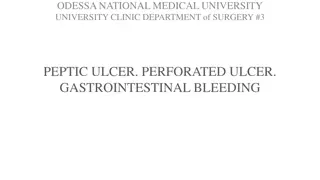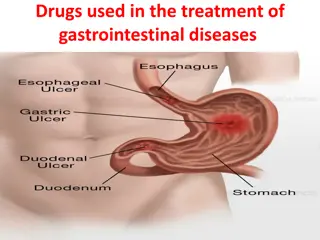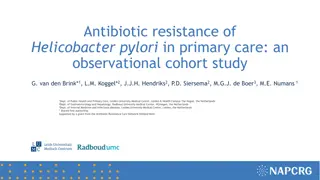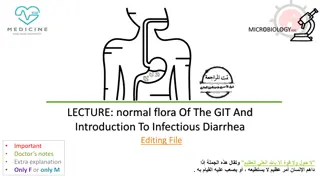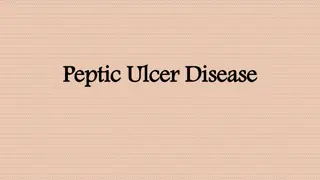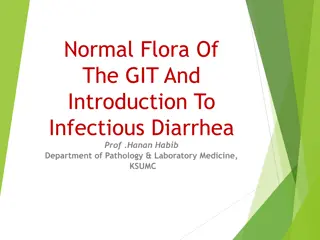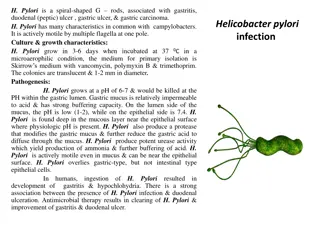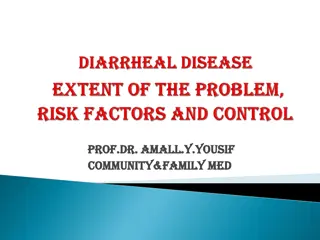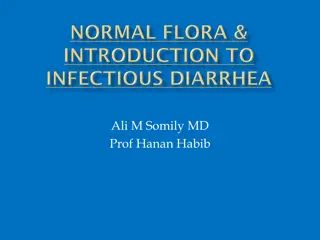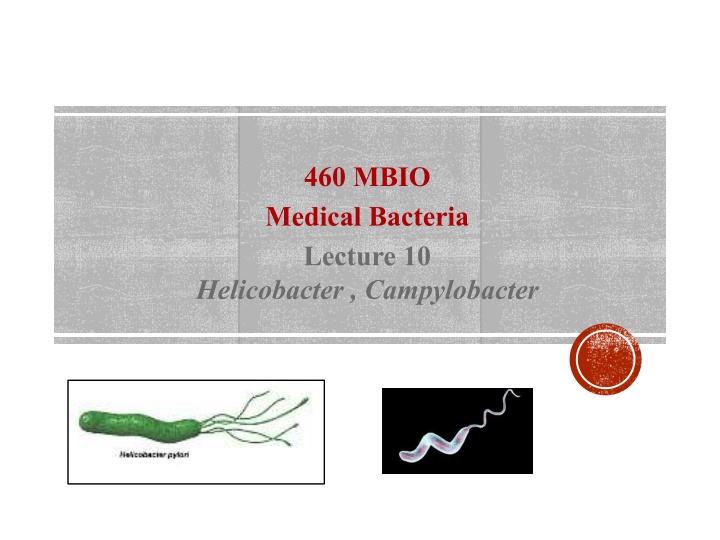
Helicobacter pylori and Campylobacter: Bacterial Characteristics and Diseases
Learn about the general characteristics, virulence factors, diseases, and laboratory diagnosis of Helicobacter pylori and Campylobacter bacteria, including their morphology, culture characteristics, transmission routes, symptoms, and medical importance. Discover how these bacteria cause diseases such as peptic ulcers, gastric cancer, and infective diarrhoea worldwide. Understand the role of virulence factors like urease and endotoxins in the pathogenicity of these bacteria.
Download Presentation

Please find below an Image/Link to download the presentation.
The content on the website is provided AS IS for your information and personal use only. It may not be sold, licensed, or shared on other websites without obtaining consent from the author. If you encounter any issues during the download, it is possible that the publisher has removed the file from their server.
You are allowed to download the files provided on this website for personal or commercial use, subject to the condition that they are used lawfully. All files are the property of their respective owners.
The content on the website is provided AS IS for your information and personal use only. It may not be sold, licensed, or shared on other websites without obtaining consent from the author.
E N D
Presentation Transcript
460 MBIO Medical Bacteria Lecture 10 Helicobacter , Campylobacter
Helicobacter pylori General Characteristics colonizes the stomach of hosts (found on surface and deep mucous layers of gastric epithelium) Morphology Spiral-shaped ( curved) highly motile with polar flagella non-spore forming, non-capsulated Culture character Optimal growth in microaerophilic environments. Biochemical test Catalase positive Oxidase positive Urease positive ( strong producer) Disease Peptic ulcer disease (gastric and duodenal ulcer) Gastric cancer Route of entry: Ingestion of contaminated food and drinks. Symptoms: abdominal pain with burning sensation ( night time pain is often), poor appetite, weight loss, vomiting, blood in stool, belching. 1
Virulence Factors Urease ( major virulence factor), Urease produces ammonia that damages gastric mucosa, ammonia also neutralizes acid pH; which allows the organism to live in the stomach. Flagella for adhesions. Protease. Exotoxins (inhibit stomach acid production). LPS ( damage mucosal cells). Laboratory diagnosis: Urea breath test. Serology: Detection of antibodies in the serum specific for H. Pylori Detection of H. pylori antigen in stool specimen 2
Campylobacter General Characteristics The infection is essentially a zoonosis with a wide range of reservoirs, including wild birds, poultry, cattle, sheep, pigs and pets. Medical importance species: Campylobacter jejuni Morphology Spirally curved motile with single polar flagella non-sporing non-capsulated Culture character require microaerobic conditions with added CO2. Selective media containing specific antimicrobials. Biochemical test oxidase and catalase positive 3
Disease: Campylobacter spp. are a leading cause of acute infective diarrhoea worldwide. eating undercooked meat, raw milk and untreated water are sources of infection. Laboratory diagnosis: Culture of faeces on selective media at 42 C under microaerophilic conditions; Campylobacter spp. are among the fastest moving bacteria. It is possible to recognise them in microscopic examinations of wet preparations of faeces from patients. Serology: detect for serum antibodies Virulence Factors Endotoxins. Cytopathic toxins enterotoxins 4


